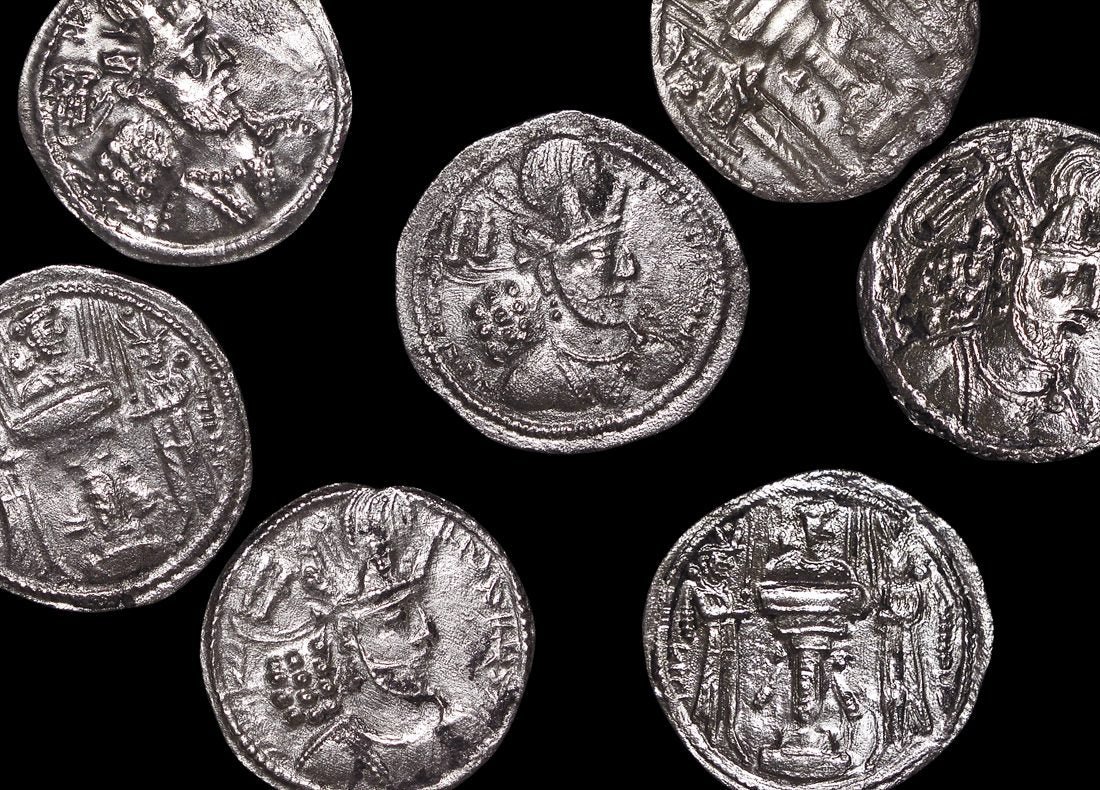 Image 1 of 4
Image 1 of 4

 Image 2 of 4
Image 2 of 4

 Image 3 of 4
Image 3 of 4

 Image 4 of 4
Image 4 of 4





Kushan Empire "Soter Megas" Copper Coin (about 1,940 years ago)
This copper coin was issued by the Kushan Empire under a ruler known only by his title "Soter Megas" (meaning "Great Savior" in Greek), recently identified as Emperor Vima Takto who ruled around 80-90 CE. The Kushan Empire was a powerful multi-cultural state that controlled territories spanning from Central Asia to Northern India.
Coin Description:
Front side: Likely depicts the king on horseback with Greek lettering "ΒΑΣΙΛΕΩΣ ΒΑΣΙΛΕΩΝ ΣΩΤΗΡΟΣ ΜΕΓΑΛΟΥ" (King of Kings, Great Savior).
Back side: Probably features a deity or royal symbol with Kharoshthi script (an ancient Indian writing system).
Technical Details:
Material: Copper alloy
Denomination: Not specified
Catalog/reference numbers: Not specified
Certification: NGC (Numismatic Guaranty Corporation)
Minting date/period: circa 80-90 CE (approximately 1,940 years ago)
Condition: As certified by NGC
Historical Significance:
This coin was minted during the height of the Kushan Empire, which controlled vast territories from the Aral Sea through present-day Uzbekistan, Afghanistan, Pakistan, and into northern India. The period represented exceptional prosperity with extensive trade networks along the Silk Road to China and sea routes to Rome. The mysterious "Soter Megas" (now identified as Vima Takto) ruled during a time of flourishing urban development, Buddhist thought, and artistic achievement, with this coinage reflecting the empire's multicultural character through its blend of Greek, Persian, and Indian elements.
This copper coin was issued by the Kushan Empire under a ruler known only by his title "Soter Megas" (meaning "Great Savior" in Greek), recently identified as Emperor Vima Takto who ruled around 80-90 CE. The Kushan Empire was a powerful multi-cultural state that controlled territories spanning from Central Asia to Northern India.
Coin Description:
Front side: Likely depicts the king on horseback with Greek lettering "ΒΑΣΙΛΕΩΣ ΒΑΣΙΛΕΩΝ ΣΩΤΗΡΟΣ ΜΕΓΑΛΟΥ" (King of Kings, Great Savior).
Back side: Probably features a deity or royal symbol with Kharoshthi script (an ancient Indian writing system).
Technical Details:
Material: Copper alloy
Denomination: Not specified
Catalog/reference numbers: Not specified
Certification: NGC (Numismatic Guaranty Corporation)
Minting date/period: circa 80-90 CE (approximately 1,940 years ago)
Condition: As certified by NGC
Historical Significance:
This coin was minted during the height of the Kushan Empire, which controlled vast territories from the Aral Sea through present-day Uzbekistan, Afghanistan, Pakistan, and into northern India. The period represented exceptional prosperity with extensive trade networks along the Silk Road to China and sea routes to Rome. The mysterious "Soter Megas" (now identified as Vima Takto) ruled during a time of flourishing urban development, Buddhist thought, and artistic achievement, with this coinage reflecting the empire's multicultural character through its blend of Greek, Persian, and Indian elements.

















